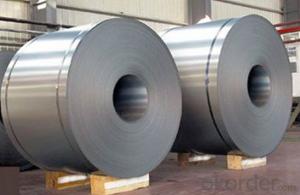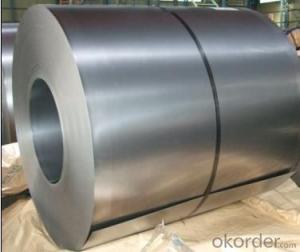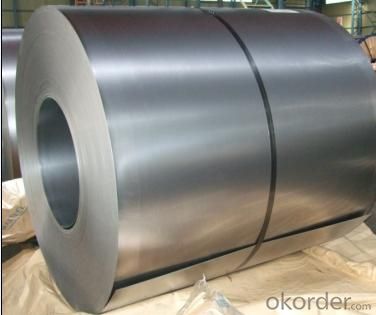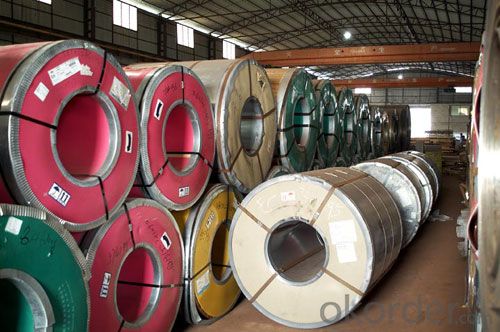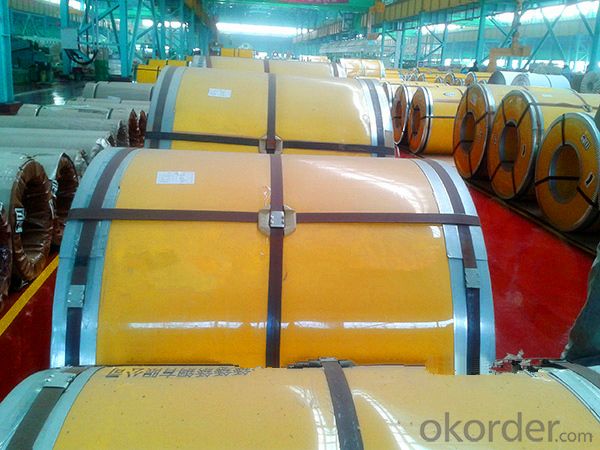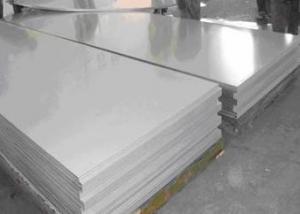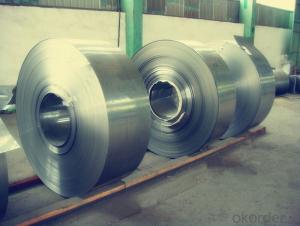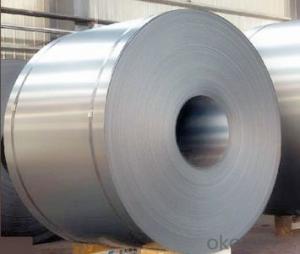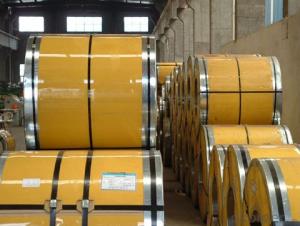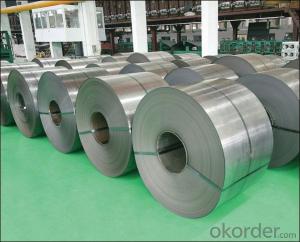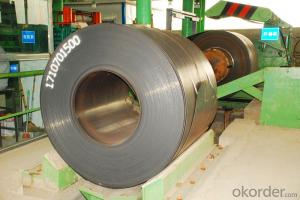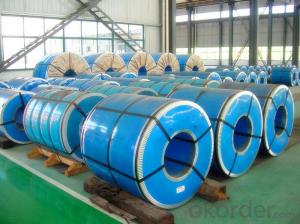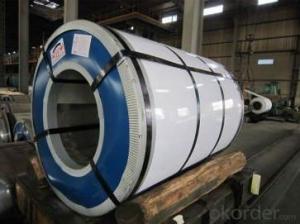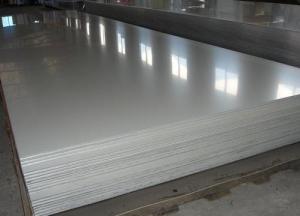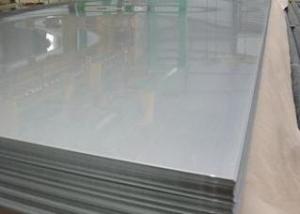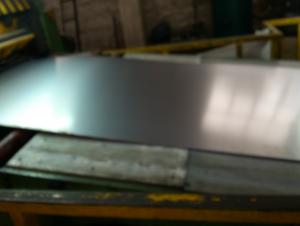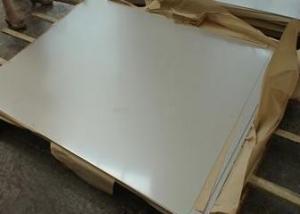Stainless Steel Coil 201 Hot Rolled Narrow Coil J2
- Loading Port:
- Lianyungang
- Payment Terms:
- TT OR LC
- Min Order Qty:
- 400 m.t.
- Supply Capability:
- 8000 m.t./month
OKorder Service Pledge
OKorder Financial Service
You Might Also Like
Hot Rolled Stainless Steel Coil
201 Narrow/Wide Strip No.1 Finish
Packaging Detail: For customer's requirement
Delivery Detail: 10-30days
201 Hot Rolled Stainless Steel Coil Specifications
THK:2.3/2.5/3.0/4.0mm
Width:485/510/550/610/1010/1240mm
Face:No.1
201 Hot rolled stainless steel Coil Application
Stainless steel is a production which not easy rust,acid resistance and corrosion resistance,so it is widely
used in light industry,heavy industry,daily necessities and the decoration industry.
201 Hot Stainless Steel Coil Chemical Composition(WT%)
(C):≤0.15, (Si):≤0.75, (Mn):5.5~7.50, (Cr):16.0~18.0, (N):≤0.25, (Ni):3.50~5.50, (P):≤0.060, (S):≤0.030
201 Hot Rolled Stainless Steel Coil
Strength Of Extension:100,000 To 180,000 Psi;
Yield Strength:50,000 To 150,000 Psi
Elongation :55 To 60%;
Modulus Of Elasticity:29,000,000 Psi;
Density :.280lbs/Cubic Inch(7.93g/Cm3)
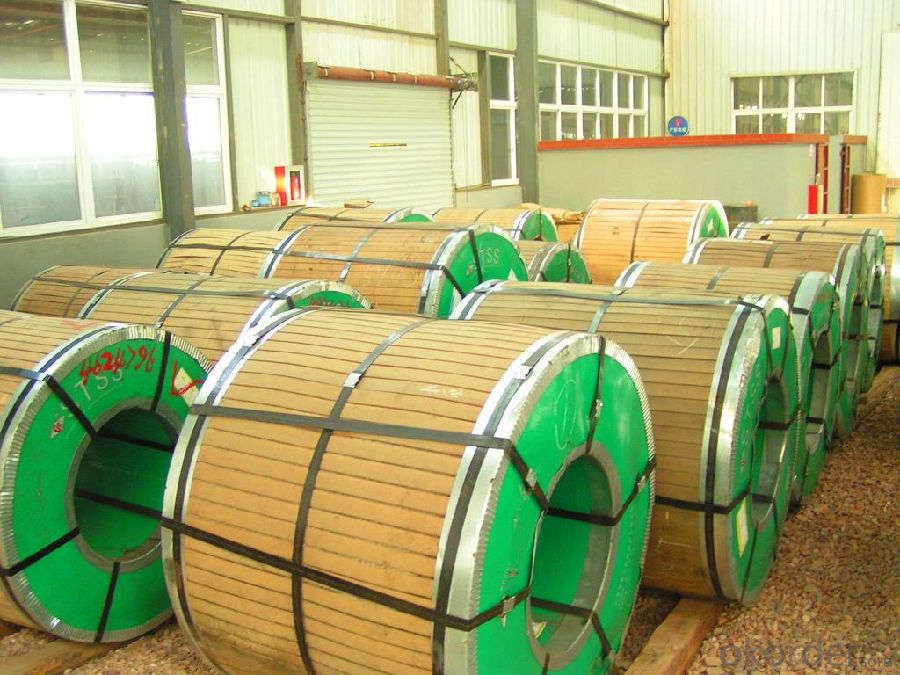
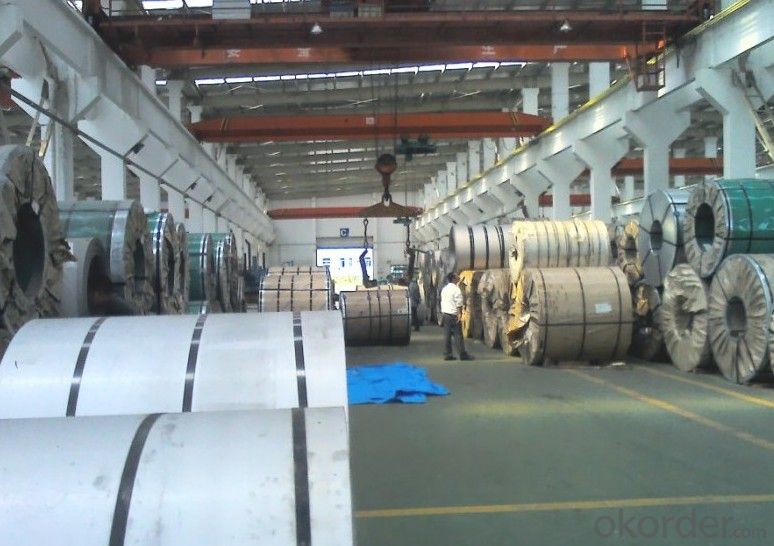
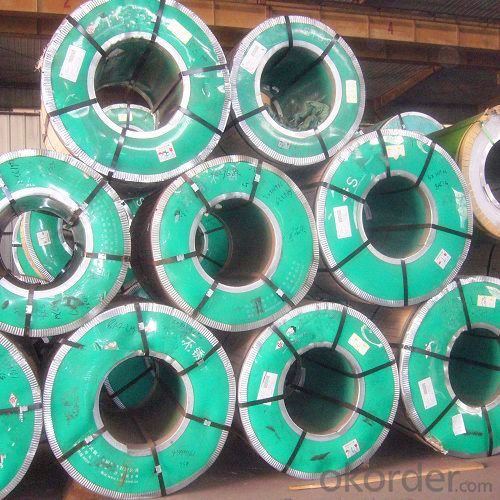
- Q: Are stainless steel strips suitable for welding with other materials?
- Yes, stainless steel strips are suitable for welding with other materials. Stainless steel is known for its excellent weldability and can be successfully welded to a variety of metals, including carbon steel, aluminum, and even other stainless steels. Welding stainless steel strips to other materials can be accomplished using various welding processes such as TIG (Tungsten Inert Gas) or MIG (Metal Inert Gas) welding, ensuring a strong and durable joint.
- Q: How do you measure the hardness of a stainless steel strip?
- The hardness of a stainless steel strip can be measured using various methods, but the most commonly used method is the Rockwell hardness test. This test involves using a diamond cone or a hardened steel ball indenter to penetrate the surface of the strip under a specific load. The depth of indentation is then measured, and a hardness value is determined based on the Rockwell scale. To conduct the Rockwell hardness test, the stainless steel strip is securely placed on a testing machine with a flat and smooth surface. The indenter is then brought into contact with the surface of the strip, and a preliminary load is applied to set the initial position of the indenter. Once the preliminary load is set, the final load is applied, and the indenter penetrates the surface to a certain depth. After removing the load, the resulting indentation is measured using a microscope or an optical measuring device. The hardness value is determined by taking the difference between the depth of penetration under the final load and the depth of penetration under the preliminary load. This value is then converted to a Rockwell hardness number using a chart or a digital display on the testing machine. It is worth mentioning that the Rockwell hardness test provides a measure of the material's resistance to indentation, which is an indirect indication of its mechanical properties such as strength and toughness. Other methods, such as the Vickers or Brinell hardness tests, can also be used to measure the hardness of stainless steel strips, depending on the specific requirements and characteristics of the material.
- Q: Are stainless steel strips suitable for cryogenic applications?
- Indeed, cryogenic applications find stainless steel strips to be appropriate. Renowned for their remarkable mechanical properties, corrosion resistance, and thermal stability, stainless steel is favored across diverse sectors, particularly cryogenics. Stainless steel strips exhibit the capability to endure frigid temperatures sans compromising their structural integrity or succumbing to brittleness, an indispensable trait in cryogenic settings. Additionally, stainless steel boasts non-magnetic attributes and low thermal conductivity, both highly desirable in cryogenic applications that necessitate minimal heat transfer and magnetic interference. In summary, stainless steel strips emerge as a dependable and long-lasting choice for deployment within cryogenic applications.
- Q: Are stainless steel strips resistant to abrasion and wear?
- Stainless steel strips, in general, possess resistance to abrasion and wear. Their durability and strength are well-known characteristics that make them highly resistant to damage from friction and contact with other surfaces. This resistance can be attributed to the unique properties of stainless steel, including its high corrosion resistance, hardness, and toughness. Consequently, stainless steel strips are suitable for a wide range of applications that involve exposure to abrasive environments or high levels of wear, such as in the automotive, construction, and industrial sectors. Nevertheless, the degree of resistance to abrasion and wear may vary depending on the specific grade and surface finish of the stainless steel strip, as well as the type of abrasives or wear mechanisms involved. To ensure the appropriate selection and use of stainless steel strips for particular applications, it is advisable to consult the manufacturer's specifications and guidelines.
- Q: Are stainless steel strips suitable for food-grade applications?
- Indeed, stainless steel strips are highly appropriate for food-grade purposes. The exceptional resistance to corrosion, durability, and hygienic characteristics make stainless steel a favored option for food processing and packaging. It neither interacts with food nor modifies its flavor, thereby ensuring the safety and dependability of this material in food-grade applications. In the food industry, stainless steel strips find utility in numerous ways, encompassing the production of equipment, utensils, containers, and storage tanks. Furthermore, stainless steel is effortlessly cleaned and maintained, further solidifying its status as the preferred choice for upholding stringent sanitary standards within food processing environments.
- Q: Can stainless steel strips be used for chemical processing equipment?
- Indeed, chemical processing equipment can certainly make use of stainless steel strips. The chemical industry widely favors stainless steel because of its remarkable resistance to corrosion, exceptional strength, and long-lasting nature. This material can withstand the effects of numerous chemicals and endure harsh conditions, rendering it suitable for a diverse range of applications in chemical processing. Examples include storage tanks, reactors, piping systems, and heat exchangers. Moreover, stainless steel strips can be shaped and sized according to specific process needs, enabling tailor-made designs. Furthermore, stainless steel boasts easy maintenance and cleaning, guaranteeing hygienic and secure operations within chemical processing facilities.
- Q: Can stainless steel strips be used in nuclear power plants?
- Yes, stainless steel strips can be used in nuclear power plants. Stainless steel is a commonly used material in the construction of nuclear power plants due to its excellent corrosion resistance, high strength, and heat resistance properties. It is used in various components such as piping, valves, and containers to ensure the safety and durability of the plant's infrastructure.
- Q: Are stainless steel strips suitable for brewery piping?
- Brewery piping can benefit greatly from the use of stainless steel strips. When it comes to selecting a material for brewery piping, stainless steel is the preferred choice due to its exceptional ability to resist corrosion, its durability, and its hygienic properties. This material is highly resistant to rust, stains, and chemical reactions, making it an ideal option for the brewing industry where frequent contact with liquids and cleaning agents is inevitable. In the context of brewery piping, stainless steel of a high-grade, such as 304 or 316 stainless steel, is typically employed. These grades offer superior resistance to both corrosion and pitting, ensuring that the pipes can endure the harsh conditions and the acidic or alkaline solutions that are commonly encountered in breweries, without deteriorating over time. Moreover, stainless steel pipes are known for being easy to clean and maintain. This is of utmost importance in a brewery as it helps prevent contamination and preserves the quality of the beer. The smooth surface of stainless steel prevents bacteria from adhering to the pipes, making it an excellent choice for the food and beverage industries where hygiene is of utmost importance. In conclusion, stainless steel strips are highly suitable for brewery piping due to their corrosion resistance, durability, and hygienic properties. This makes them a reliable and long-lasting option for the brewing industry.
- Q: Can stainless steel strips be used in water treatment plants?
- Yes, stainless steel strips can be used in water treatment plants. Stainless steel is known for its corrosion resistance, making it suitable for applications in water treatment plants where it will be exposed to water and various chemicals. It provides durability and long-lasting performance, making it an ideal material for components and structures used in water treatment processes.
- Q: Can stainless steel strips be used for magnetic applications?
- Yes, stainless steel strips can be used for magnetic applications. However, it is important to note that stainless steel itself is not a magnetic material. The magnetic properties of stainless steel strips are typically achieved by adding other elements such as nickel or manganese to the alloy. These elements help to create a magnetic structure within the stainless steel, allowing it to be attracted to magnets. It is also worth mentioning that the magnetic strength of stainless steel strips may vary depending on the specific composition of the alloy.
Send your message to us
Stainless Steel Coil 201 Hot Rolled Narrow Coil J2
- Loading Port:
- Lianyungang
- Payment Terms:
- TT OR LC
- Min Order Qty:
- 400 m.t.
- Supply Capability:
- 8000 m.t./month
OKorder Service Pledge
OKorder Financial Service
Similar products
Hot products
Hot Searches
Related keywords
